What is a Tax Settlement?
A tax settlement is an agreement approved by the IRS or state tax authorities that allows a taxpayer to pay less than the full amount owed, addressing their tax obligations, usually when financial circumstances prevent full payment. While not every case qualifies, tax authorities review each situation based on current regulations and the taxpayer’s ability to pay. Options include various settlement paths and payment plans that spread the tax obligation over time rather than requiring immediate full payment.
Although the IRS aims to collect all taxes due, it may agree to a settlement because recovering some funds is better than none. The main advantage of a tax settlement is paying less than what you owe, but it also helps you avoid penalties, interest, and other consequences associated with unpaid taxes.

What Are My Tax Settlement Options?
The IRS provides various programs to help taxpayers resolve their debt. Your best path depends on your specific financial situation:
- Offer in Compromise (OIC): A true settlement that allows you to pay a reduced amount of tax debt. It’s the most common option for those who cannot afford to pay what they owe.
- Installment Agreements: A long-term payment plan to pay off your full tax debt over up to 72 months.
- Currently Not Collectible (CNC): A temporary status that stops IRS collection efforts if you are facing financial hardship.
- Penalty Abatement: A program to reduce or remove penalties and interest from your tax bill.
While these options can provide relief, the Offer in Compromise is the only program that can truly settle your debt for less than you owe.
Eligibility Criteria for Tax Settlement Programs
An OIC based on Doubt as to Collectability applies when you simply don’t have the financial ability to pay your full tax liability, even over time.
Reasonable Collection Potential (RCP):
- The IRS calculates your RCP by adding your monthly disposable income (income minus allowable living expenses) multiplied by a set number of months to the equity in your assets.
- If your RCP is less than the total tax bill , you may qualify.
Income Documentation:
- Pay stubs, W-2s/1099s, bank statements
- Proof of any irregular or seasonal income
Expense Verification:
-
- IRS Allowable Expense Guidelines (e.g., housing, utilities, transportation)
- Extraordinary costs: uninsured medical bills, childcare, or eldercare
How Optima Tax Relief Helps:
We perform a detailed RCP calculation to determine your precise offer amount. Our team gathers and vets every necessary document, ensuring IRS acceptance of your income and expense figures. We prepare and file IRS Form 656 (Offer in Compromise) and Form 433‑A/B (Collection Information Statement) with professional accuracy, reducing delays and audit flags.
If there is a legitimate question about whether you owe the tax debt, due to errors in assessment, record-keeping, or penalties, you can contest the amount through an OIC.
Common Disputes:
- Misreported income (e.g., employer reporting errors)
- Disallowed deductions or credits (e.g., business expenses, education credits)
- Incorrect penalty assessments (e.g., failure‑to‑file vs. failure‑to‑pay)
Evidence Required:
- Amended tax returns (Form 1040X)
- Correspondence with employers or financial institutions
- IRS Notices and transcripts showing discrepancies
How Optima Tax Relief Helps:
Our tax professionals meticulously compare IRS transcripts to your original filings to identify every discrepancy. We draft the legal and factual arguments needed to support your case, including cover letters and exhibits. We negotiate directly with the IRS Appeals or OIC Unit, leveraging our track record to challenge liability efficiently.
When standard IRS expense allowances don’t reflect your true hardship, you can request additional relief under Exceptional Circumstances.
Qualifying Situations:
- Medical Crises: Ongoing treatments, long‑term disability, or catastrophic injury
- Natural Disasters: Significant uninsured losses from events like hurricanes, floods, or wildfires
- Family Caregiving: High costs associated with caring for an elderly or disabled family member at home
- Business Losses: Drastic drops in revenue or uninsured property damage affecting your livelihood
Supporting Documentation:
- Hospital bills, physician statements, insurance denial letters
- FEMA or insurance claims for disaster relief
- Detailed budgets outlining caregiving or business recovery expenses
How Optima Tax Relief Helps:
We compile a compelling “hardship narrative” that ties your exceptional costs to IRS guidelines. Our experts obtain and organize all necessary medical, insurance, or relief‑agency documentation. We prepare an OIC submission that clearly demonstrates why standard IRS allowances fall short in your case.
What are the Benefits of an IRS Settlement?
Negotiating an IRS settlement offers more than just tax relief, it can reshape your financial future by reducing what you owe and stopping aggressive collection efforts. Below are the two cornerstone advantages of securing an Offer in Compromise, each explained in detail.
Reduced Overall Liability
An Offer in Compromise lets you settle your tax bill for less than the full amount, often by a substantial margin.
- Calculation of Reasonable Collection Potential (RCP): The IRS uses your RCP, the sum of your disposable income over a fixed period plus the net equity in your assets, as the benchmark for an acceptable offer. A lower RCP means a smaller settlement figure.
- Negotiation Leverage: By demonstrating limited ability to pay, you gain leverage to negotiate down penalties, interest, and even portions of the principal. This can translate into savings of 40–70% (or more) off your total balance.
- Timing and Cash Flow Benefits: You can choose a lump‑sum payment with a 20% initial deposit or a periodic installment plan of up to 24 months.
- End to Accruing Interest and Penalties: Upon acceptance of your offer, any further interest charges and late‑payment penalties immediately cease.
Protection from Enforcement Actions
An approved OIC not only handles your tax balance but also halts the IRS’s most severe collection tools.
- Lien Withdrawal: The IRS must release any federal tax liens recorded against your property once your settlement terms are fulfilled. This removal clears the public record, restoring your ability to sell, refinance, or leverage your home equity.
- Levies and Garnishments Stopped: Offers in Compromise immediately suspend bank levies and wage garnishments in effect at the time of approval. Funds previously frozen in checking or savings accounts are released, and payroll deductions end.
- Peace of Mind: Beyond financial mechanics, knowing the IRS can no longer pursue aggressive collection measures provides significant emotional relief. You regain control of your day‑to‑day finances and can focus on rebuilding savings and credit.
How Does Tax Settlement Work?
Tax settlement, most commonly through an Offer in Compromise (OIC), allows you to resolve your IRS liability for less than what you owe or establish an affordable payment plan. Here’s a step‑by‑step overview of the process:
1. Identify Your Best Settlement Option
- Analyze IRS Programs: Choose among Offer in Compromise, Installment Agreement, Penalty Abatement, or Currently Not Collectible status.
- Eligibility Check: Verify you qualify based on one of the three OIC criteria: Doubt as to Liability, Doubt as to Collectability, or Exceptional Circumstances.
Visit our overview of Offer in Compromise or our Tax Relief Services page to explore your best-fit solution.
2. Gather Required Documentation
- Form Preparation: Complete IRS Form 656 and Form 433-A/B based on whether you’re filing as an individual or business.
- Financial Support Files: Collect bank statements, pay stubs, asset records, and documentation for disputes or hardships.
Check Optima’s IRS Forms library, including Form 656.
Read how to calculate your offer amount in their guide: How Much Should I Offer in Compromise?
3. Prepare and Submit Your Application
- Package Submission: Attach completed forms, collected exhibits, and the non-refundable $205 application fee (unless waived).
- Payment Requirement: For lump-sum offers, include an initial 20% deposit. For installment offers, submit your first payment.
Learn about payment choices under Optima’s Offer in Compromise page.
4. IRS Review and Negotiation
- IRS Evaluation: The OIC Unit may request additional supporting documentation or clarification.
- Negotiation Period: You (or a representative) may negotiate with the IRS to justify your offer or dispute liability.
Optima explains this stage in “Understand How Tax Relief Works”.
5. Offer Acceptance and Payment Terms
- Lump‑Sum Option: After acceptance, remaining balance must be paid in up to five payments within five months.
- Installment Option: Alternatively, spread payments over up to 24 months, with the first payment due at submission.
- Effect on Debts: Interest and penalties stop accruing once the offer is accepted.
The payment options are explained under IRS Installment Plans, and OIC page.
6. Fulfill Agreement and Maintain Compliance
- Complete Payments: Stick to the agreed schedule and deadlines.
- Stay Compliant: File all current and future tax returns and make required payments for uncovered years.
- Final Status: After full payment, the IRS marks your liability as “settled in full,” releases liens or levies, and restores your good standing.
- Post-Settlement: Confirm withdrawal of any liens or levies by monitoring your account or reviewing the public record.
FAQs About Tax Settlement
What makes me a strong candidate under “Doubt as to Collectability”?
You qualify if your Reasonable Collection Potential (RCP), a formula combining your disposable income over a set time plus net asset equity, is lower than your tax balance. The IRS uses this measure to gauge your ability to pay. Pay stubs, bank statements, and documented extraordinary expenses (like medical bills or childcare) strengthen your eligibility.
Can I contest the tax amount under “Doubt as to Liability”?
Yes, if there’s a genuine dispute over your tax liability such as misreported income, disallowed credits, or incorrect penalties. You’ll need evidence, like amended returns (Form 1040X), IRS transcripts, employer correspondence, or financial institution records, to show the tax balance is incorrect.
What qualifies as “Exceptional Circumstances”?
This category covers hardships beyond normal IRS allowances, such as major medical bills, severe illness, long-term disability, uninsured losses from natural disasters, caregiving costs, or business losses. Thorough documentation, hospital invoices, insurance denials, FEMA claims, or caregiving budgets, is essential to demonstrate genuine hardship.
How much can I realistically settle my taxes for?
Most accepted OICs offer 40–70% reductions based on your RCP. This amount depends on your monthly disposable income and equity values. Once approved, the IRS stops all future penalties and interest.
What happens if my offer is rejected by the IRS?
If an OIC is rejected, the IRS will outline why. You can appeal using Form 13711 within 30 days, providing updated documentation or adjusting your offer. Alternatively, you can submit a new OIC, often under a different basis, if your situation has changed.
How does an OIC affect liens, levies, and garnishments?
Once accepted, an OIC immediately halts wage garnishments and bank levies and prevents new ones. Tax liens remain until you complete your payments, after which you can request lien withdrawal. All collection actions cease once you meet the agreement terms.
Tax Settlement Blog Posts
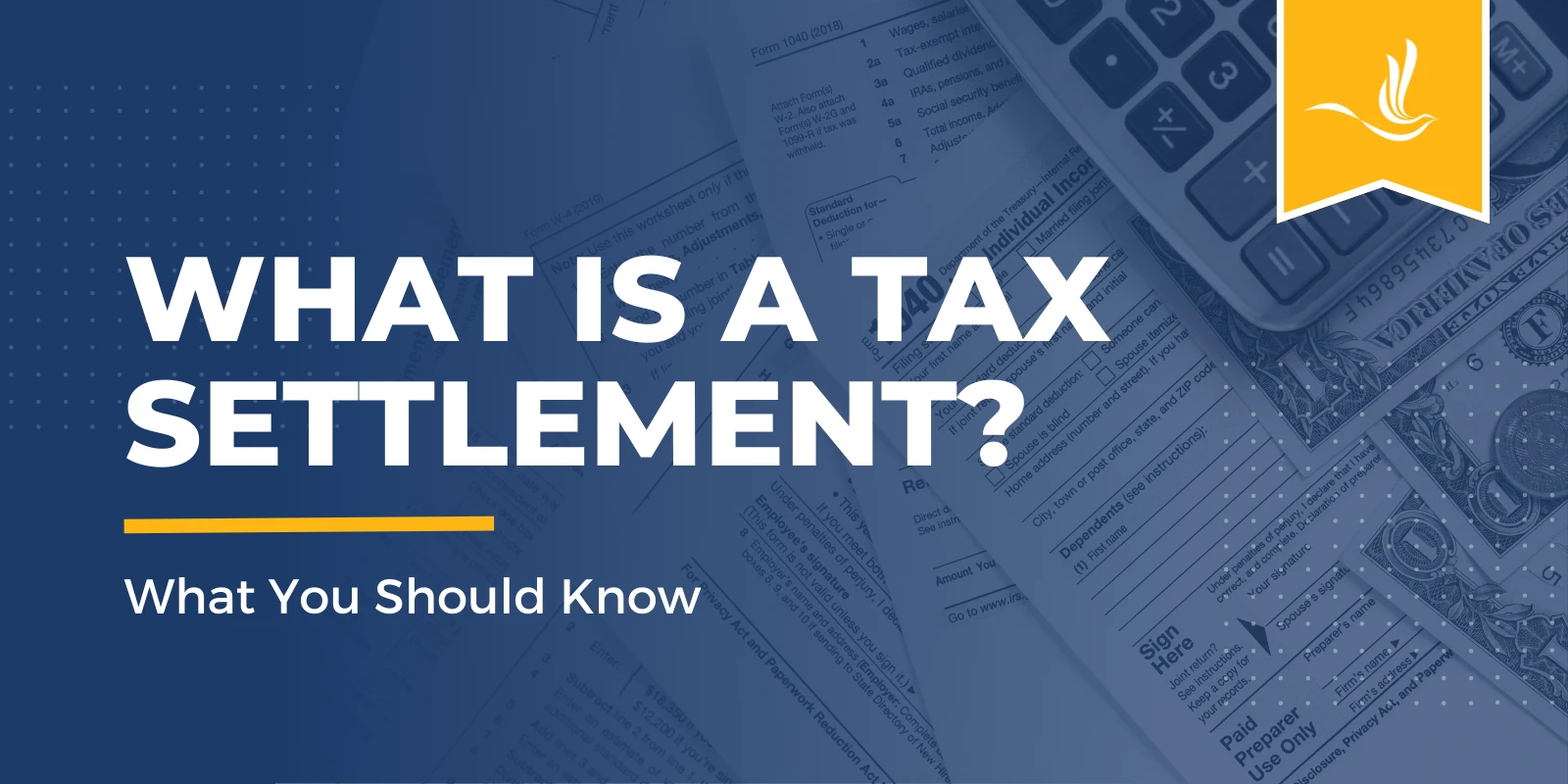
What is a Tax Settlement?
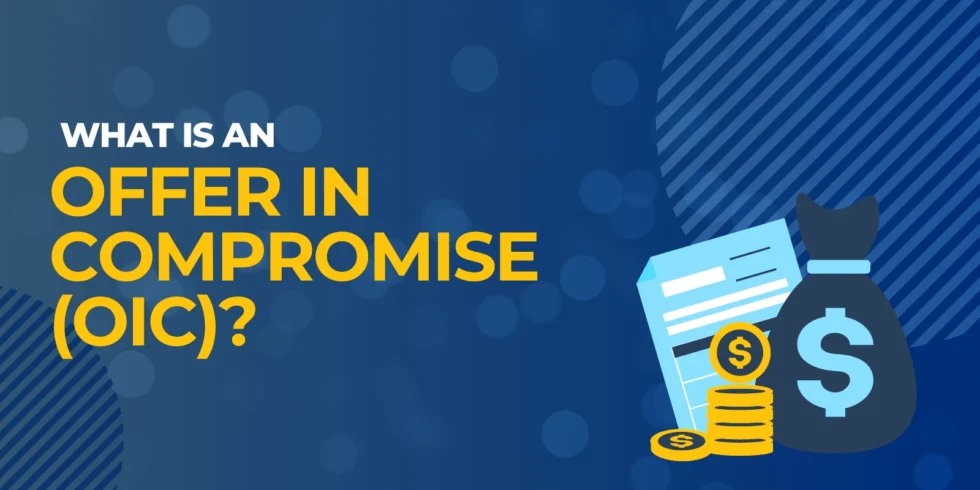
What is an OIC?
Back taxes can cause extreme stress for individuals. Fortunately, the IRS offers options to help taxpayers settle their tax bills, one being an Offer in Compromise (OIC).
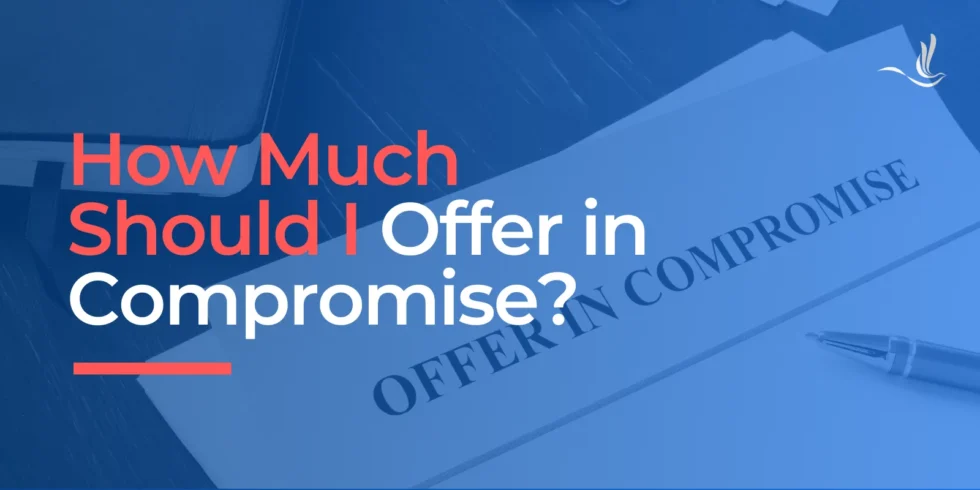
How Much Should I Offer in Compromise?
When facing a substantial tax bill, an Offer in Compromise (OIC) can be a potential lifeline for resolving outstanding liabilities.
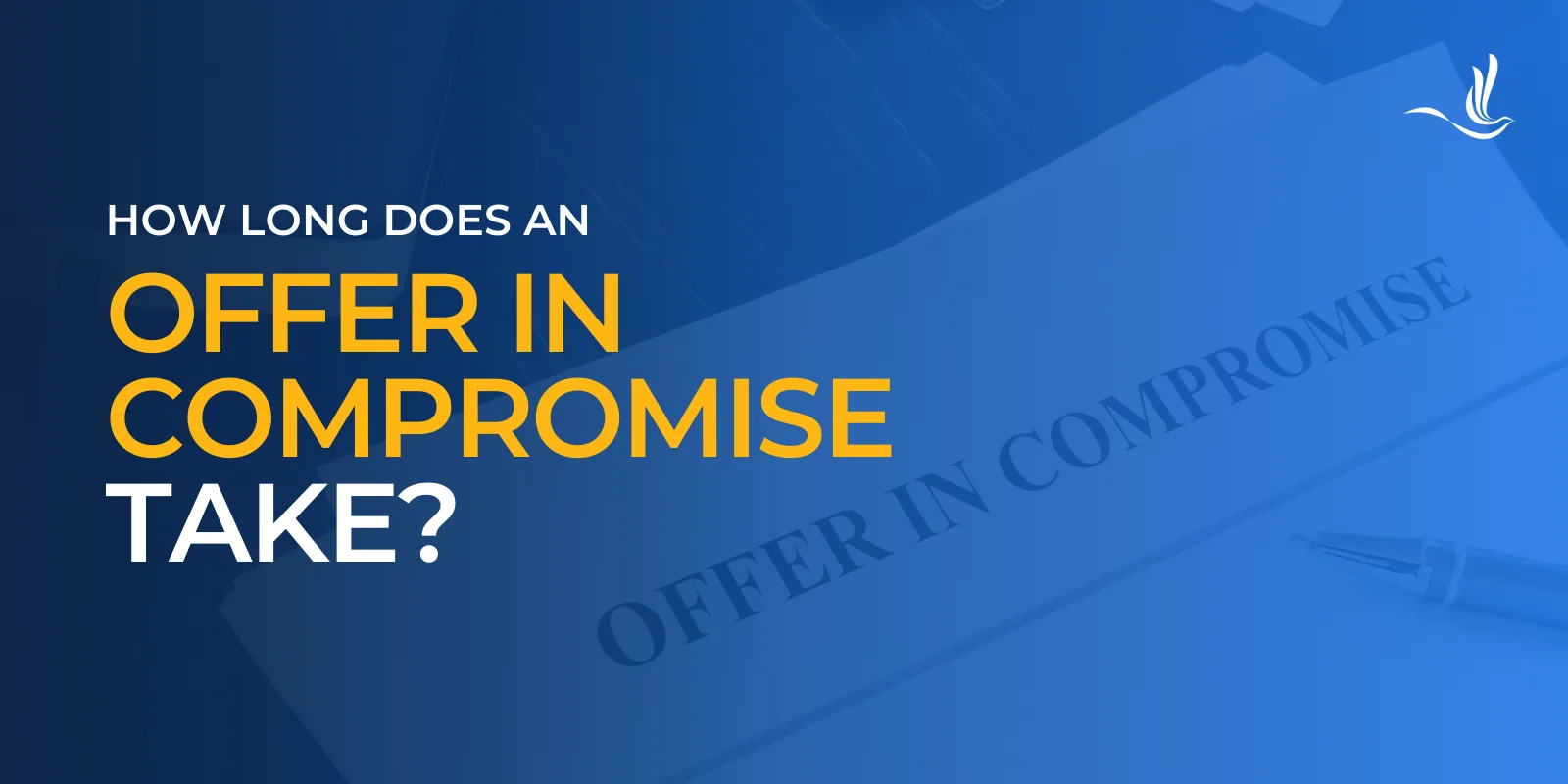
How Long Does an Offer in Compromise Take?
While an Offer in Compromise can be a valuable option, it’s important to understand that the process is not quick or straightforward.

How Tax Relief Works
Owing the IRS can be one of the most stressful situations a taxpayer can face. Here’s an overview of what tax relief is and how it works.
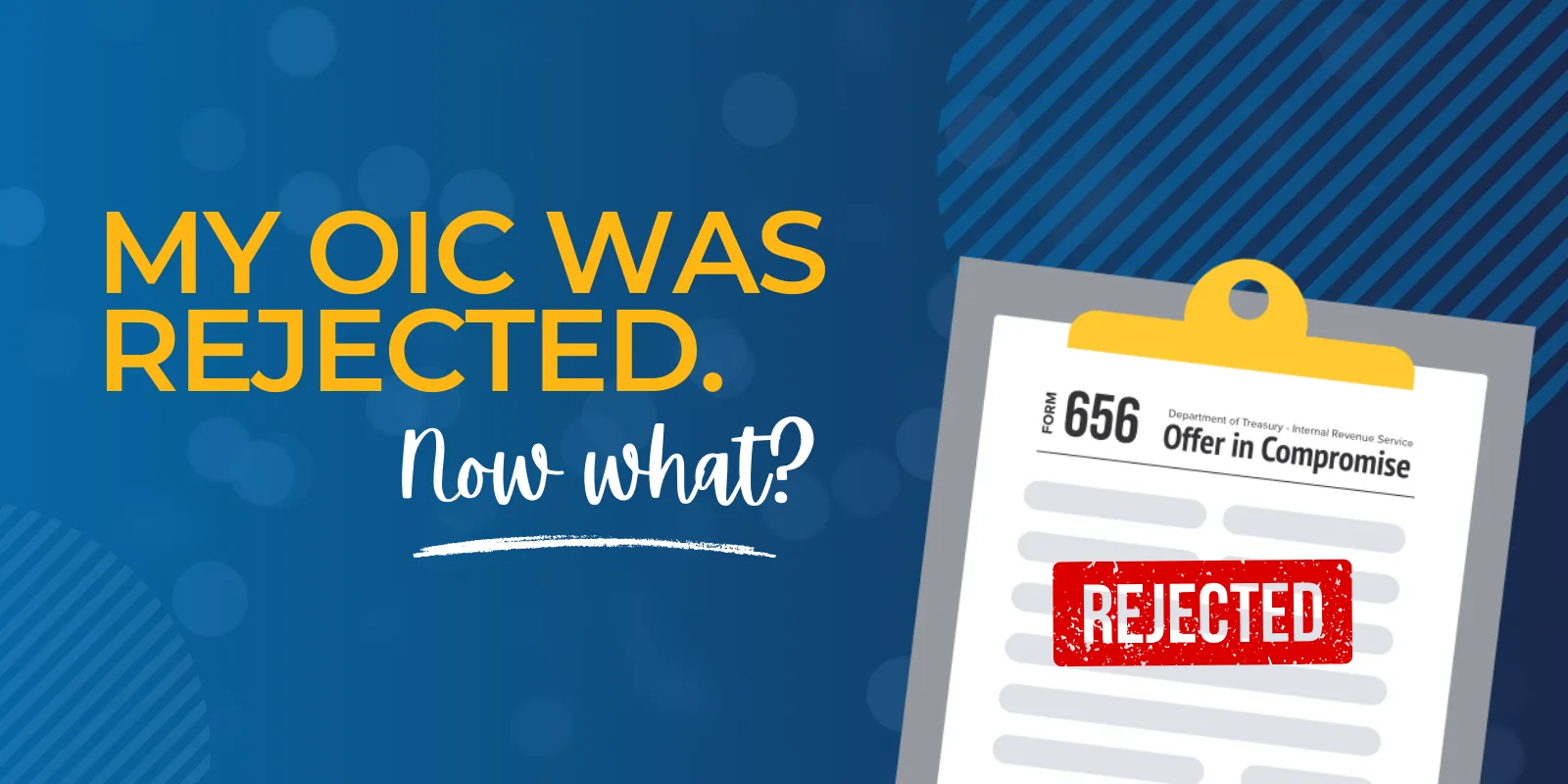
My OIC was Rejected. Now What?
If your Offer in Compromise (OIC) is rejected by the IRS, it can feel discouraging, but you still have options.
Let Optima Tax Relief Help
Call 1-800-536-0734 for a free consultation.
Let Optima Tax Relief Help
Call 1-800-536-0734 for a free consultation.